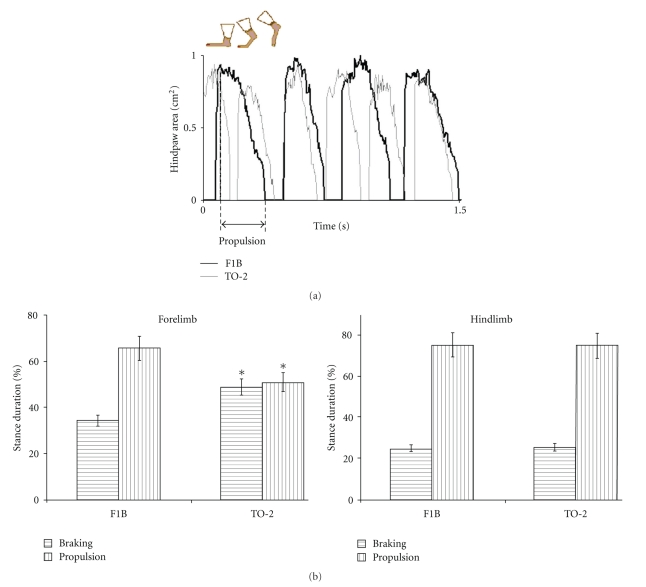Figure 3.
(a) Gait signal of the left hindlimb of a TO-2 hamster superimposed over the gait signal of the left hindlimb of a F1B control hamster. Stride frequency was significantly higher and stride length significantly shorter in TO-2 dystrophic hamsters compared to F1B control hamsters. Propulsion duration (arrows) was significantly shorter in TO-2 hamsters compared to F1B control hamsters. This finding was consistent in hamsters studied at 1 month, 3 months, and 9 months of age. (b) The relative contributions of braking and propulsion to the stance duration of forelimbs and hindlimbs in 9-month-old F1B control hamsters and TO-2 delta-sarcoglycan-deficient hamsters walking at 16 cm/sec. The relative contributions of forelimb braking and propulsion to stance were significantly altered in TO-2 dystrophic hamsters (*P < .05, TO-2 versus F1B hamsters). Although propulsion duration was decreased in TO-2 hamsters, the contribution of propulsion to stance was not different.

